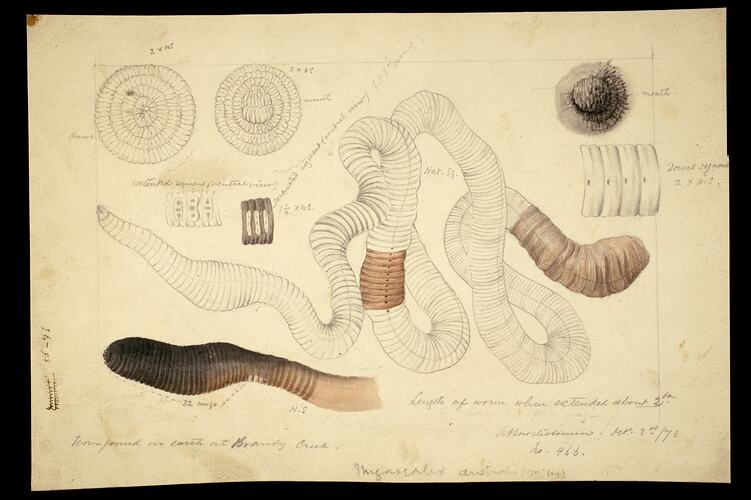Upon his arrival in Melbourne in 1854, Frederick McCoy took on the mantle of authority in the disciplines of geology, palaeontology, biology and botany, delivering university lectures, and making scientific pronouncements.
In 1878 McCoy, proudly and for the first time, described Megascolides australis, the Giant Gippsland Earthworm, in Decade One of the Prodromus. His description of the largest earthworm in the world was accompanied by Arthur Bartholomew's two-colour lithograph.
By 1888 the worm had turned, quite literally, when Walter Baldwin Spencer, the newly appointed Chair of Biology at the University, revised McCoy's description of the species in the Transactions of the Royal Society of Victoria. Together with McCoy's associate John James Wild, Spencer assembled detailed and sophisticated new images of the gigantic worm.
These lithographs presented a level of analysis unprecedented by the Prodromus. Made possible by microscopy and clinical dissection, they revealed in great detail the vascular and digestive systems of the animal. McCoy's magpie-like collection habits and comparatively rudimentary descriptions appeared amateur by comparison to this lavish large-format work.
Spencer's description of Megascolides australis exemplified the new heights of scientific rigour that came to characterise Australian science in the 20th century, a period when the Prodromus was largely relegated to historical curiosity, rather than a vital contribution to the scientific record.
A Darwinist who brought a new spirit of collaborative investigation to Australian science, Spencer went on to become the new Director of the National Museum on McCoy's death, immediately relocating and reorganising the institution before going on to attain world fame as an anthropologist.
More Information
-
Keywords
-
Authors
-
Contributors
-
Article types
